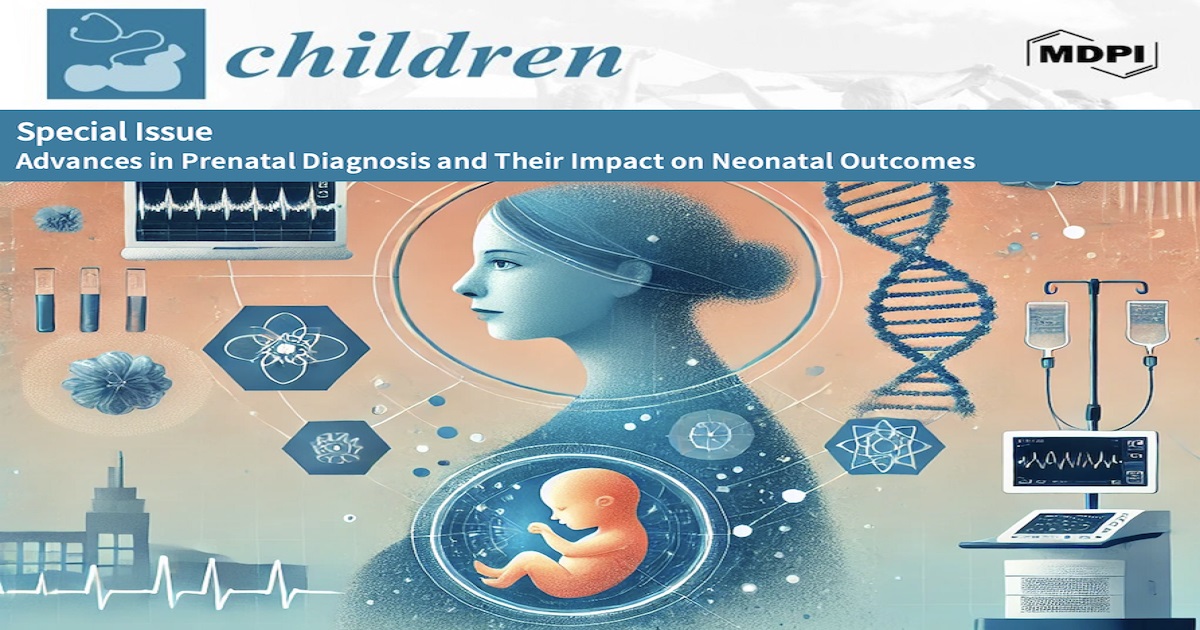Advances in Prenatal Diagnosis and Their Impact on Neonatal Outcomes
A special issue of Children (ISSN 2227-9067).
Deadline for manuscript submissions: closed (30 September 2025) | Viewed by 6524

Special Issue Editors
2. Fetal, IVF and Reproduction Simulation Training Center (FIRST), 41010 Seville, Spain
3. Centre for Biomedical Network Research on Rare Diseases (CIBERER), 41013 Seville, Spain
Interests: fetal medicine; fetal therapy; prenatal diagnosis; prenatal genetics; genomics
2. Department of Surgery, University of Seville, 41013 Seville, Spain
Interests: fetal medicine; fetal therapy; prenatal diagnosis; prenatal genetics; genomics
Special Issue Information
Dear Colleagues,
Prenatal diagnosis has revolutionized perinatal care, enabling the early detection of fetal conditions and guiding interventions that profoundly influence neonatal outcomes. Since its inception with the advent of ultrasound and genetic testing, this field has evolved into a multidisciplinary domain integrating advanced imaging, molecular diagnostics, and computational technologies. These advances have not only improved diagnostic accuracy but have also expanded our understanding of the fetal environment and its long-term implications.
This Special Issue aims to explore the latest developments in prenatal diagnosis and their direct and indirect impacts on neonatal health. We seek to highlight cutting-edge research that bridges the gap between prenatal findings and neonatal care, addressing both clinical and technological innovations.
We welcome submissions focusing on novel diagnostic techniques, predictive models for neonatal outcomes, interventional approaches, and ethical considerations in prenatal care. Original research articles, reviews, and case studies that showcase interdisciplinary collaboration are particularly encouraged, fostering a comprehensive understanding of this critical continuum in medicine.
Dr. Ángel Chimenea-Toscano
Dr. Lutgardo García-Díaz
Guest Editors
Manuscript Submission Information
Manuscripts should be submitted online at www.mdpi.com by registering and logging in to this website. Once you are registered, click here to go to the submission form. Manuscripts can be submitted until the deadline. All submissions that pass pre-check are peer-reviewed. Accepted papers will be published continuously in the journal (as soon as accepted) and will be listed together on the special issue website. Research articles, review articles as well as short communications are invited. For planned papers, a title and short abstract (about 250 words) can be sent to the Editorial Office for assessment.
Submitted manuscripts should not have been published previously, nor be under consideration for publication elsewhere (except conference proceedings papers). All manuscripts are thoroughly refereed through a single-blind peer-review process. A guide for authors and other relevant information for submission of manuscripts is available on the Instructions for Authors page. Children is an international peer-reviewed open access monthly journal published by MDPI.
Please visit the Instructions for Authors page before submitting a manuscript. The Article Processing Charge (APC) for publication in this open access journal is 2400 CHF (Swiss Francs). Submitted papers should be well formatted and use good English. Authors may use MDPI's English editing service prior to publication or during author revisions.
Keywords
- prenatal diagnosis
- neonatal outcomes
- fetal medicine
- perinatal care
- predictive models
- advanced imaging
- interventional approaches
Benefits of Publishing in a Special Issue
- Ease of navigation: Grouping papers by topic helps scholars navigate broad scope journals more efficiently.
- Greater discoverability: Special Issues support the reach and impact of scientific research. Articles in Special Issues are more discoverable and cited more frequently.
- Expansion of research network: Special Issues facilitate connections among authors, fostering scientific collaborations.
- External promotion: Articles in Special Issues are often promoted through the journal's social media, increasing their visibility.
- Reprint: MDPI Books provides the opportunity to republish successful Special Issues in book format, both online and in print.
Further information on MDPI's Special Issue policies can be found here.






